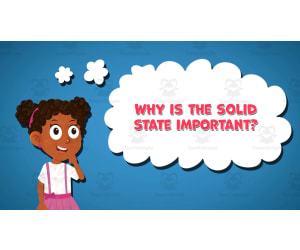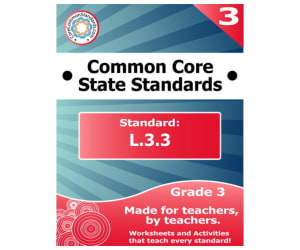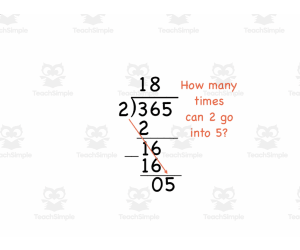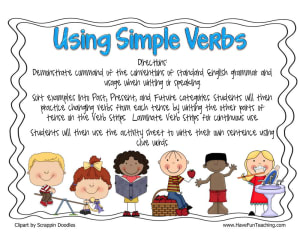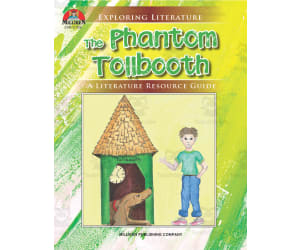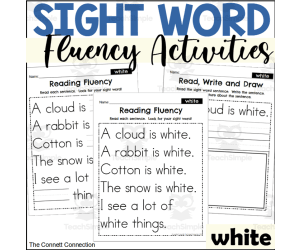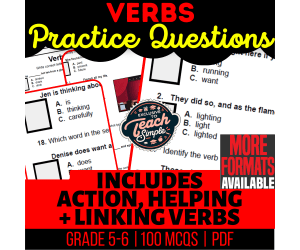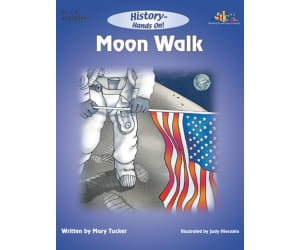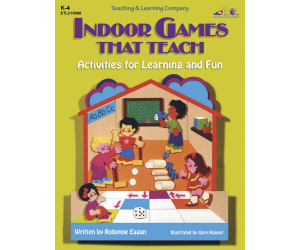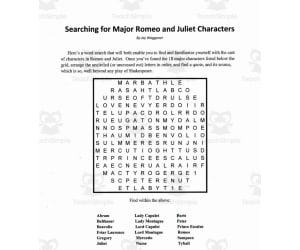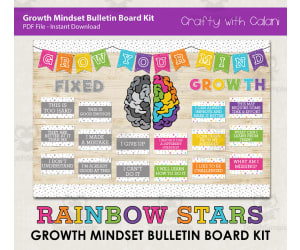2,762 products added recently
Page 1533 - Best Teaching Resources
I WONDER - Why Is The Solid State Important | Animated Video Lesson
Chemistry, Science, Grade 4, 5, 6, 7, 8, 9, 10, Lesson Plans, Teacher Tools
Video Introduction An amazing activity designed for the students to learn more about STEM. I WONDER - Why Is The Solid State Important | Animated Video Lesson Do you like STEM subjects? what is your favorite one? Have you ever tried to plant a seed? If yes, tell us more about it. Or have you ever tried to invent something? If yes, tell us more about it. And how do you think it will help us? Have you ever seen a microorganism under a microscope? What was it? And how it looked like? Mathematics is a marvelous subject. Let' sharpen our brains and solve some equations. Do you like timetable tricks? What is your favorite one? Do you know how to code? Have you ever created an app or a game before? If yes, how was it like? I WONDER - Why Is The Solid State Important | Animated Video Lesson The video is perfect for encouraging the researching skills for the students, while learning more about this fantastic topic. I WONDER - Why Is The Solid State Important | Animated Video Lesson This friendly designed video is suitable for students at school, homeschooling, and as a group activity. Format Available in MP4 format.
Author Educational Voice
Tags Why Is The Solid State Important, Why Is The Solid State Important Video, Solid State, Solid State Facts, Solid State Facts For Kids, Solids, Solids Facts, State Of Matter, States Of Matter
L.3.3 Third Grade Common Core Lesson
ELA, Language Development, Vocabulary, Common Core, Grade 3, Teacher Tools
This lesson is perfect for third grade teachers who want to help their students understand how to change their language depending on the audience. This is an important skill for students to have as they continue their education and enter the workforce.
Author Have Fun Teaching
Tags
What is missing? Vocabulary Boards - COLOR SET 18
Special Resources, Speech Therapy, Kindergarten, Preschool, Grade 1, Activities
What is Missing? Vocabulary Boards - Color Set 18 is an educational resource that strengthens critical thinking, pattern recognition, and vocabulary skills. This teaching tool features two printable boards per page. Each board displays a sequence of colorful images, with one image missing. Students must examine the patterns and determine which picture is missing. Educators can implement this adaptable resource in various ways, including whole-class instruction, small group work, independent practice, homework, or assessment . By focusing attention on visual details and verbalizing observations, this engaging activity builds essential skills for early childhood through 1st grade. Use it to liven up lessons across subjects or during speech therapy sessions. What is Missing? invites students to sharpen their powers of concentration while expanding their vocabularies.
Author WORDS ASIDE
Tags Special Education, Speech Therapy, What Is Missing, Vocabulary Boards, Flash Cards, Language Development, Literacy, Small Group
Valentine's Day Build A CVC Word
ELA, Language Development, Spelling, Kindergarten, Preschool, Grade 1, Worksheets & Printables, Worksheets
A Valentine's Day worksheet for your student to practice reading, spelling, and phonics. Say the word and listen to the missing sounds. Cut and paste the correct letters to complete the words below each picture (CVC words).
Author Cherry Workshop
Tags CVC, Reading, Spelling , Valentine's Day, Phonics
CHEF'S KITCHEN Word Search Worksheet Activity
Common Core, Life Studies, Social Studies, Early Learning, Elementary, Middle School, Activities, Worksheets & Printables
CHEF'S KITCHEN Word Search Worksheet Activity (2nd, 3rd, 4th & 5th Grade) Word Search Worksheet Activity in Your CHEF'S KITCHEN (2nd, 3rd, 4th, & 5th Grade) Prepare a delightful experience for your students with the Chef's Kitchen Word Search Worksheet Activity! Back to the Kitchen - Developed for students in 2nd-5th grades, this interactive and fun activity allows students to discover the world of cooking and the tools, ingredients, and skills that chefs use in the kitchen. This word search uses important words such as “recipe,” “oven,” “ingredients,” “knife,” and “stir,” so that students familiarize themselves with the language of preparing food and cooking. The students will learn how chefs prepare and cook delicious meals while reinforcing vocabulary associated with the culinary arts as they search for these terms. What’s Included? ✔ Word Search Puzzle – Search for important kitchen words and useful cooking vocabulary. ✔ Answer Keys — Follow along with the easy-to-follow answers to check yourself. ✔ Vocabulary Builder – Items associated with food, cooking and kitchen tools. ✔ Learn While Having Fun – Introduces you to the role of a chef and the kitchen as you assemble the pieces to complete a puzzle This worksheet would pair perfectly with lessons on food, careers, or skills for everyday life. Whether used in the classroom, for homework, or as an independent study tool (it could also be used in afterschool, weekend and summer programming), it’s a fun way for students to experience the world of cooking and build important vocabulary along the way. Why Choose This Resource? ✅ Informative & Fun – Prompts students to complete an interactive activity related to cooking and kitchens. ✅ Develops Vocabulary & Comprehension – Vocabulary development with kitchen and food words. ✅ Food Awareness – Introduces students to chefs and culinary careers. ✅ Perfect for Different Learning Levels – Intended for 2nd to 5th-grade students. ✅ Suitable for Classroom Use & Home Use – Meets the needs of group activity, homework, or enrichment. Allow your students to explore the fascinating world of cooking and the kitchen environment while at the same time developing their vocabularies and critical thinking skills. Word Search Worksheet Uses — Fun and Educational! Download, print and begin your exploration today at the Chef’s Kitchen!
Author space shope
Rating
Tags CHEF'S , KITCHEN, Word Search, Worksheet , Activity, CHEF'S KITCHEN, CHEF'S KITCHEN Word Search, CHEF'S KITCHEN Word Search Worksheet, CHEF'S KITCHEN Word Search Worksheet Activity, CHEF'S KITCHEN Word Search Worksheet Activity For Kids
Long Division Video
Math, Multiplication and Division, Multiplication, Grade 3,
The Long Division Video: An Educator’s Teaching Assistant The Long Division Video is an excellent aid for public school educators and home-school teachers. Crafted to support third grade pupils, this resource leverages visual and auditory elements for a comprehensive understanding of long division. Music in Teaching Education experts espouse the use of music in teaching. Information delivered through songs is found to be engaging and promotes better memory retention, catering to various learning styles. Description of the Product This product offers a 1-minute MP4 video that introduces learners to the concept of long division. It visually and audibly details the intricacies involved in solving long division problems, perfect for auditory-visual learners. Classroom Usage: Seamless integration into math lessons via presentations during group discussions or reinforcement during smaller group or one-on-one sessions. Homeschool Usage: Serve as revision materials or part of homework tasks encouraging independent study. Versatility: Usable initially for explaining concepts then subsequently utilized as review material throughout the course. Subjects Use-Mediums Educators can impart knowledge using music in the classroom without disrupting their current lesson schedule.. Songs Create interactive breaks E Visual Media Audible Learning The Long Division Video ensures active class participation as students have fun while navigating through challenging math concepts. Simple and easy to use, teachers can weave into their lessons without disrupting their teaching schedule, making it an appealing addition to the repertoire of teaching aids.
Author Audio Memory
Tags Long Division, Educational Video, Math Curriculum, Visual Learning, Auditory Stimuli
Using Simple Verbs Past Present Future Activity
ELA, Grammar, Grade 1, 2, 3, 4, Activities
This activity is perfect for students who struggle to use verbs correctly in their writing. By sorting examples into Past, Present, and Future categories, students will be able to identify which verb tense to use in their writing. This activity is a great way to help students improve their writing skills.
Author Have Fun Teaching
Tags Verbs
Hot and Cold Pictures Worksheet
Math, Measurements, Preschool, Grade 1, 2, 3, 4, Worksheets & Printables, Worksheets
This Hot and Cold Pictures Worksheet is a great way for students to learn about temperature. With this worksheet, they will use pictures to determine if objects are hot or cold. This is a great way for them to improve their understanding of temperature.
Author Have Fun Teaching
Tags
Bird Alphabet Color by Code for Capital Letters
ELA, Creative Arts, Art, Language Development, Phonics, Pre-Reading, Kindergarten, Preschool, Worksheets & Printables, Worksheets
These Bird Alphabet Color by Code for Capital Letters worksheets are designed specifically for preschoolers and kindergartners. These alphabet worksheets combine the excitement of learning about birds with learning capital letters in the alphabet. This resource focuses on identifying and recognizing the letters of the alphabet in a fun and engaging way. What does it include? There are 11 different worksheets included in this resource. These alphabet worksheets are differentiated to allow all students success in completing each page. Some worksheets include only 5 letters to identify while others have up to 8 letters to help encourage students who need the extra challenge. Each image in this packet includes a bird themed image for students to engage in fun and motivating letter recognition activities. How to Use: Literacy Center: The teacher can place these worksheets in a literacy center for students to complete. Morning Work: These worksheets make a great, easy to set up activity for students to complete as classmates arrive to class. Quiet Time Activity: Students who do not nap can complete these worksheets while their classmates rest. Homework: These worksheets are an easy to assign homework activity for students to complete with parents. Small Group Activity: Teachers can call aside small groups of students who need more help with letter recognition to complete these in a small group setting. Early Finishers: Students who finish their classroom assignments early can help fill the extra time by completing one of these worksheets. Emergency Sub Plans - These easy to assign worksheets allows subs to provide an engaging activity with little effort or planning. Developed Skills: Following Directions: Matching Letters: Recognition of color words. These alphabet worksheets are a no prep activity for teachers to assign to students. Simply print out each worksheet and hand to the students to complete.
Author The Connett Connection
Rating
Tags Color By Code, Alphabet Recognition, Preschool/kindergarten, Capital Letters, Bird Alphabet
Country Study Worksheets on Chad - Africa
Social Studies, Geography, Grade 7, 8, 9, 10, 11, 12, Worksheets & Printables, Worksheets
Country Study Worksheets on Chad - Africa This Social Studies and Geography teaching resource is designed to enhance students' understanding of Chad through two interactive worksheet activities. Ideal for 7th to 12th-grade students, it is perfect for both middle and high school classrooms. The resource features questions and exercises on various Social Studies and Geography topics related to Chad, including languages, history, basic geography (climate, borders, and territory), economy (currency and sectors), the capital city, major cities, and culture. In this Social Studies + Geography Country Study on Chad, teachers can find the following exercises + questions: 1 QR Code linked to Chad's Location on Google Maps 2 questions related to the languages spoken in Chad questions related the history of Chad questions related to geographical facts (climate, borders and territory) questions related to the economy 1 exercise on Chad's Capital city, N'Djamena 1 exercise on other cities in Chad 1 exercise on the culture of Chad Perfecr for middle and high school students, this resource provides an overall understanding of Chad, covering history, geography, economy, and culture. It is an excellent addition to Social Studies and Geography lessons, ensuring students gain a general introduction of the country. "Learning with Alan" is a teaching resources store dedicated to providing high quality educational meterial that help educators create engaging and effective learning experiences in geography and social studies. Learning is Fun – Never Forget! For more teaching resources and activities like this one, be sure to visit Learning with Alan
Author Learning with Alan
Tags Country Study, Worksheets, Printable, Geography, Social Studies, Chad, African, Africa, Activity
Dictionary Skills Alphabetical Order Worksheet
ELA, Language Development, Pre-Reading, Vocabulary, Grade 1, 2, 3, Worksheets & Printables, Worksheets
This Alphabetical Order Worksheet is a great way to help your students learn how to put words that begin with the same letter in ABC order.
Author Have Fun Teaching
Tags Alphabetical Order, Dictionary Alphabetical Order, Put Words In Abc Order Worksheet, Dictionary In Alphabetical Order
Phantom Tollbooth: A Literature Resource Guide
ELA, Literature, Grade 3, 4, 5, 6, Worksheets & Printables, Novel Studies
Phantom Tollbooth: A Literature Resource Guide An innovative teaching tool, adeptly designed for instructors to introduce fine literature to students from grades 3 to 6 with varying reading abilities. This comprehensive guide operates as a bridge between educators and the world of literature, stimulating young minds and nurturing a propensity for language arts. About This Guide The Guide is organized into a PDF file comprising 44 pages that are ready-to-print and easy to employ in various learning settings. It embraces multiple aspects of pedagogy by integrating oral and written expressions through systematic exercises. Thought-provoking discussion questions Writing assignments These tasks are carefully curated aiming at skill development in comprehension, application, synthesis, and evaluation areas; thus enkindling deeper understanding while cementing fundamental concepts. A Holistic Approach Towards Learning This Resource Guide exemplifies the holistic approach towards learning where every student's viewpoint is valued and discussed through class interaction which invariably builds confidence aside academic perspicacity. In addition this teacher manual provides exhaustive background material empowering the educator with handy facts. A Unique Feature Includes: An analysis of elements of fiction such as: The setting, The characterization, The plot point of view along with themes making it a robust Lit guide. This resource operates seamlessly either for whole group instruction or individual assignment making it quite versatile irrespective of Language Art curriculum pattern adopted by schools or homeschoolers. In essence , Phantom Tollbooth: A Literature Resource Guide effortlessly facilitates literature being transformed from plain words on text to vibrant images in young scholars' mind while advancing their skills multidimensionally––a true asset in any educational setting striving excellence!
Author Classroom Complete Press
Tags Literature, Comprehension, Book Companion, Storytelling, Phantom Tollbooth, The Phantom Tollbooth Activities, The Phantom Tollbooth Lesson Plan, Phantom Tollbooth Lesson Plan, Phantom Tollbooth Discussion Questions, Phantom Tollbooth Activity Guide
Interesting or New Words Worksheet
ELA, Reading, Language Development, Vocabulary, Preschool, Grade 1, 2, 3, Worksheets & Printables, Worksheets
This resource is great for helping students learn new vocabulary words. The worksheet has them look for unknown or interesting words in a story and then provides a definition and space to practice using the word in a sentence.
Author Have Fun Teaching
Tags Context Clues
Current U.S. Senators from Nebraska (Biography PPT Bundle)
Social Studies, History, History: USA, Government, Grade 7, 8, 9, 10, 11, 12, Teacher Tools, Presentations
This informative PowerPoint bundle profiles both of Nebraska's current U.S. Senators - Deb Fischer and Pete Ricketts. The slideshows give an in-depth look at each senator's background, including details on their education, early careers, political experience, elected offices held, accomplishments in office, and family life. Created for social studies classes, these 105-page Senator biography presentations can facilitate lessons and discussions on Nebraska state politics, U.S. civics, and more. With timelines, photos, and key facts, educators can use these PPTs to help students understand Senator Fischer and Senator Ricketts' paths to Capitol Hill and their legislative records representing the Cornhusker State.
Author Mr. Matthews Teacher Store
Tags Nebraska Senators, Senator Biographies, Senate Ppts, Fischer Ricketts, Nebraska Politics
Sight Word Fluency Packet - white
ELA, Reading, Preschool, Grade 1, Worksheets & Printables, Worksheets
These no prep sight word worksheets encourage all students to practice sight word reading fluency for the target sight word. There are three different fluency practice pages that all focus on learning to spell and read the target sight word in context of a sentence and in context of a story. Allowing students to practice the sight word in context allows students to connect the words meaning and grammatical usage to help gain a greater understanding of the target word. Each passage repeats the target word multiple times for repeated practice with the word. Students will practice reading, writing, reading comprehension, and spelling with these fluency pages. Included in this sight word fluency packet: * One reading fluency page that contains a single passage for students to read and find the target sight word. * One write and read fluency page where students will write the target sight word and then read the passage. * One read, write, and draw fluency page where students will read a sentence, copy the sentence then draw a picture to illustrate the sentence. When can these be used? Independent Reading Practice - These fluency activities can be given to students at their desks to practice the sight word independently. Small group activities - These fluency activities can be used to target specific students who need to learn this sight word. Shared or Partner reading activities - These fluency activities can be used to encourage students to work together to read the words. Homework - These fluency activities can be sent home for parents to assist students with reading and/or writing. Morning Work - These fluency activities can be used for morning work activities as students wait for all students to arrive to class. Emergency sub plans - The easy to use aspect of these fluency pages allows subs to assign and assist with ease. The reading fluency page and the write and read page include the same passage and is the perfect way to differentiate between students who need to focus on just recognizing the word while reading and those who need more practice with writing and spelling the sight word. This sight word packet focuses on the sight word: white
Author The Connett Connection
Tags Sight Words, Sight Word Worksheets, Sight Word Reading Passages, Sight Word Stories, High Frequency Words, Fry Sight Words, Fluency Passages, Reading Passages
Verbs Practice Questions - Grammar Grade 5-6 (PDF)
ELA, Language Development, ESL, Grammar, Common Core, Resources for Teachers, Grade 5, 6, 7, Worksheets & Printables, Worksheets, Quizzes and Tests, Teacher Tools, Tests, Assessments
Verbs Grammar Practice MCQS ELA MCQS Overview: In this series of lessons, students will embark on an engaging journey to master the language arts skills that make communication effective and expressive. These lessons are designed to help students recognize, understand, and apply key grammar, vocabulary, and writing conventions in both their writing and speech. Each lesson builds upon the previous one, providing a structured blend of direct instruction, interactive group activities, and independent practice. With engaging tasks and thought-provoking questions, students will explore sentence structure, word choice, punctuation, and grammar rules to strengthen their understanding of English language conventions. Accompanied by free supplementary materials covering all topics, this series ensures a well-rounded and enjoyable learning experience. Through practice and exploration, students will develop the skills needed to analyze language, construct clear sentences, and express themselves with confidence. Verbs Overview: Action Verbs Helping Verbs Linking Verbs Additional Verbs Practice PDF Version This is the PDF uneditable version. This download is available in GOOGLE Docs, GOOGLE Forms, GOOGLE Slides. PDF, PPT, WORD, check the links below for more details. FULL CATALOG OF DOWNLOAD LINKS HERE Grade 5/6 Links: Capitalization & Punctuation Google Docs Google Forms Google Slides PDF PPT Word Free Supplementary Materials Pack Adjectives Google Docs Google Forms Google Slides PDF PPT Word Free Supplementary Materials Pack Nouns Google Docs Google Forms Google Slides PDF PPT Word Free Supplementary Materials Pack Pronouns Google Docs Google Forms Google Slides PDF PPT Word Free Supplementary Materials Pack Verbs Google Docs Google Forms Google Slides PDF PPT Word Free Supplementary Materials Pack Prefixes & Suffixes Google Docs Google Forms Google Slides PDF PPT Word Free Supplementary Materials Pack Sentence Structure Google Docs Google Forms Google Slides PDF PPT Word Free Supplementary Materials Pack Subject Verb Agreement Google Docs Google Forms Google Slides PDF PPT Word Free Supplementary Materials Pack Tenses Google Docs Google Forms Google Slides PDF PPT Word Free Supplementary Materials Pack Context Clues Google Docs Google Forms Google Slides PDF PPT Word Free Supplementary Materials Pack Defining Words Google Docs Google Forms Google Slides PDF PPT Word Free Supplementary Materials Pack Fill in the Blanks Google Docs Google Forms Google Slides PDF PPT Word Free Supplementary Materials Pack Homophones Google Docs Google Forms Google Slides PDF PPT Word Free Supplementary Materials Pack Synonyms Google Docs Google Forms Google Slides PDF PPT Word Free Supplementary Materials Pack ELA Review Questions Overview Questions have three answer choices. There are a handful of pictures on each test for aesthetic purposes, as well as a review sheet covering most of the topics covered in the product. Introduction or Example Sheet Each topic will include an introduction or example sheet to go through first with your students. Full Answer Keys Full answer keys and sample responses are provided so no matter how busy you are, you know you're covered! In the Supplementary Pack Interactive Ice Breakers: Engaging warm-up activities that introduce students to key ELA concepts, such as quick capitalization corrections and punctuation challenges. Guided Practice: Structured teacher-led exercises that reinforce grammar and punctuation rules, helping students identify and apply them correctly in sentences. Group and Partner Tasks: Collaborative activities where students work together to edit sentences, correct capitalization, and improve punctuation through peer discussion and teamwork. Independent Worksheets: Carefully designed worksheets that provide focused practice, allowing students to apply learned concepts and refine their skills independently. Exit Tasks: Quick assessments at the end of each lesson, prompting students to reflect on what they’ve learned and apply their knowledge in writing and editing tasks. For More Like This For similar downloads and other frees, do check out Cored Group on TeachSimple.
Author Cored Education
Tags Elementary, Answers, Ccss, Common Core, Grammar, Tests, Test Prep, Assessment, Grade 5, Grade 6
Comparing Two Events Worksheet
ELA, Reading, Preschool, Grade 1, 2, 3, Worksheets & Printables, Worksheets
This activity is perfect for helping students compare and contrast two events from an informational text. It's a great way to get students to think critically about the events and to identify the ways in which they are unique.
Author Have Fun Teaching
Tags Compare And Contrast
Moon Walk: History - Hands On
Social Studies, History, History: USA, Grade 1, 2, 3, 4, Teacher Tools, Lesson Plans
Moon Walk: History - Hands On Step into history with the Moon Walk: History – Hands-On educational resource. This exciting teaching tool brings vibrant lessons about mankind's lunar voyage right to your classroom! Designed specifically for Grades 1 through 4, it enriches any social studies or history curriculum focusing on American History. The thrill of space exploration is encapsulated within this product, immersing students in fascinating facts and extraordinary visuals. The uniqueness of Moon Walk lies in its blend of interactive activities aimed at fostering curiosity, enhancing critical thinking, and promoting profound interest in our journey beyond Earth. Interactive Features A comprehensive lesson plan packed with creative activities, transforming theoretical histories into tangible experiences. An interactive module suitable for whole class teachings or small group assignments emphasizing American History between Grades 1-4. Detailed role-plays based on real events that align with Common Core standards. Students can experience being an astronaut or recreate pivotal mission moments. Clever design focused on practical retention instead of mere rote learning aligning with contemporary pedagogical trends. All you need is a basic PDF reader to convert your classroom into Cape Canaveral! This sophisticated educational aid has the potential to transport students back to that monumental day; July 20, 1969. Whether used as homework material or incorporated within teacher-led sessions promoting active participation—every usage promises deep understanding and genuine joy of learning. Experience history like never before with Moon Walk: History - Hands On!
Author Classroom Complete Press
Tags PDF
Indoor Games That Teach: Activities for Learning and Fun
, Preschool, Grade 1, 2, 3, 4, Games, Activities
Indoor Games That Teach: Activities for Learning and Fun - An Ideal Resource for Educators Indoor Games That Teach: Activities for Learning and Fun is a practical tool perfect for educators looking to innovate teaching methods. This compilation encourages children's natural play instinct, transforming it into educational empowerment. Wide Range of Stimulating Indoor Games The resource offers a variety of active, indoor games that engage young minds. These include: Board games : Exercises strategic thinking. Problem-solving challenges: Develops cognitive abilities. Finding-fact exercises: Improves research skills. This wide range ensures every child finds something they enjoy while understanding the learning value behind each game. Innovative Numerical Instruction Methods Golf-themed games and marble activities engage students with a knack for numbers. Far from boring equations, these innovative games turn mathematics into exciting adventures! Melding Art and Geometry through Paper Folding Learners explore both geometry and artistic creativity in paper folding activities which integrate artistic flair with an understanding of shapes. For rhythmic learners, . Inclusive Content Suitable From Kindergarten to Grade 4 . Instruction methods cater to Kindergarten until Grade 4 age groups effectively increasing its usage within the primary education context. A Handy PDF Format Available Anywhere The product offers easy access by providing content in PDF format. Unleashing Creativity Across Whole Group And Small Group Lessons This versatile teaching aid can be used across various teaching methods– from whole group sessions to small focused ones aimed at targeting unique skills for each child. Home educators will also find this a beneficial addition to their curriculum aids. No matter the location—classrooms, homes, or anywhere else—this friendly resource allows for effortless implementation, fostering abstract thinking even in indoor situations!
Author Classroom Complete Press
Tags PDF
Write the Subject Worksheet
ELA, Grammar, Grade 2, 3, 4, 5, Worksheets & Printables, Worksheets
This Write the Subject Worksheet is a great way for students to practice writing the subject to fill in the blank and complete the sentence. This is a great resource for teachers who want to help their students practice writing the subject.
Author Have Fun Teaching
Tags Subject And Predicate
Word Search: Searching for Romeo and Juliet Characters
ELA, Reading, Reading Comprehension, Literature, Grade 8, 9, 10, 11, 12, Word Searches, Worksheets, Worksheets & Printables
Word Search : Searching for Romeo and Juliet Characters This Word Search: Searching for Romeo and Juliet Characters is a Unique Teaching Aid Designed to stimulate learning in the grades 8-12, this Word Search: Searching for Romeo and Juliet Characters resource bridges language arts, literature, and reading comprehension. Not only does it introduce Shakespeare's classic - Romeo & Juliet, but it also unfolds understanding of major characters such as Mercutio or Friar Laurence. Multiple Usage Possibilities Group Activity: Encourages critical thinking and teamwork. Individual Assignment: Fosters independent thought about the play. Homework Project : Provokes quiet introspection past school hours. Much More than a Worksheet! Once all words in the search have been located, another mystery waits to be uncovered! The remaining uncircled letters form a special message when arranged correctly – potentially a line from Shakespeare himself! Lively Classroom Discussions Project this resource on your digital whiteboard to spark engaging classes or printouts for individual study with minimal supervision required. Presents in Easy-to-access PDF Format. This versatile tool adapts smoothly across diverse educational settings including classrooms and homeschooling alike. For educators keen on innovatively presenting literary classics – Word Search: Searching for Romeo and Juliet Characters is an ideal choice!
Author Jay Waggoner
Tags Teaching Aid, Literature, Reading Comprehension, Word Search Puzzle, Character Analysis
Bulletin Board : Growth Mindset In White Rainbow Stars Design
Resources for Teachers, Classroom Management, Not Grade Specific, Bulletin Boards, Classroom Decor
Bulletin Board Growth Mindset Display in Rainbow Stars The rainbow star growth mindset bulletin board set motivates students to adopt a positive mindset towards learning. The eye-catching display emphasizes that mistakes and challenges are part of the learning process. With perseverance and a can-do attitude, students can achieve their goals. The set includes a border, lettering spelling "Growth Mindset," a brain image, and colorful mindset prompt cards. Editable cards in PDF and PPTX formats allow customization. Components print on 8.5 x 11 paper for easy assembly. While designed for a 4 x 6-foot board, display size depends on spacing and image sizes chosen. Vibrant rainbow stars against a white background inspire students to keep growing their minds. The upbeat display fosters student engagement, self-confidence, resilience, and love of learning.
Author Crafty with Calani
Tags Bulletin Board Ideas, Emotional Learning Tool, Positive Mindset Bulletin Board, Classroom Affirmation Board, Growth Mindset Classroom Display, Growth Mindset Bulletin Board, Goal Setting Bulletin Board, Change Your Mindset Bulletin Board, White Rainbow Stars Bulletin Board, White Rainbow Stars Classroom
Sarah Breedlove Walker Interactive Foldable Booklets – EBOOK
Social Studies, History, History: USA, Grade 2, 3, 4, 5, 6, 7, 8, 9, 10, 11, 12, Worksheets & Printables, Worksheets
Sarah Breedlove Walker Interactive Foldable Booklets – eBook This easy-to-follow and interactive eBook is designed for educators interested in emphasizing the importance of African American history icons in their curriculum. The book dives into the life and career of Sarah Breedlove Walker, a prominent figure in African American History. Form and Composition The eBook is comprised of 10 interactive pages. Suited for grade levels from 2 to 12, the format takes students on an exploratory journey into Walker's life. It comes as a downloadable PDF file equipped with engaging foldables designed to inspire active learning. Title: Sarah Breedlove Walker Interactive Foldable Booklets - Ebook Pages: 10 Interactive Pages Type: Downloadable PDF File Foldables Include: Key Facts About Sarah Breedlove Walker's Life And Achievements The foldables touch on vital aspects of Sarah Breedlove Walker's personal life, her impact on business landscape with her establishment - The Madam C.J. Walker Company. With two main sections available for exploration, this educational tool aims at enhancing learners' knowledge base while providing deeper insights into historical events and personalities. Inclusive Instructions Per Foldable Activity Included To Cater To Younger Or Less Experienced Learners! The resource includes instructions per each foldable activity making it easy to use across various grade levels or different learning approaches: whole class instruction during social studies lectures or individual assignments for home-schooled kids. Fosters Collaborative Learning While Reinforcing Research Skills Crucial For Subjects Like U.S History! Additionally, incorporating this resource into your teaching materials can stimulate discussions among smaller student groups encouraging collaborative learning whilst reinforcing key research skills crucial in studying subjects like U.S History. Crafted By Skilled Educators To Resonate With Diverse Learners Each activity within the Sarah Breedlove Walker Interactive Foldable Booklets - Ebook has been thoughtfully created by expert educators intent on creating valuable teaching aids that resonate with a wide range of learners. It is an effective tool for enriching curriculum while honoring significant contributions made by African Americans throughout history.
Author Knowledge Box Central
Tags Interactive, Foldables, Sarah Breedlove Walker, African American History, Madam CJ Walker Company
Desktop Organizer Wallpaper Monthly 2023 With Folder Icons
, Not Grade Specific, Classroom Decor
Desktop Organizer Wallpaper Monthly 2023 With Folder Icons: A Review The Desktop Organizer Wallpaper Monthly 2023 With Folder Icons is an excellent resource for educators desiring to optimize their digital teaching environment. This compact product beautifies computer screens and enhances file organization and accessibility. Main Features Unique desktop wallpapers: The resource charts out twelve unique desktop wallpapers corresponding to each month of the year 2023. Provided in PNG format, these images add vibrancy while aiding teachers segregate different file types or duties. Diverse folder icons: Along with the dynamic wallpapers, educators receive forty distinct folder icons in PNG format which can be designated to particular folders for easy identification. Cross-Compatible: Admirably flexible, this tool works seamlessly on both Mac and PC operating systems. Detailed instructions are supplied for easy navigation and set-up across both platforms. This resource is advantageous across various settings — from lesson planning by singular teachers to collaborations among educator teams. It could also function as a captivating classroom decor item when using shared computers or plotting homework involving digital files—producing learning groups based on tailored folder icons could engage learners more fruitfully! Catering across grades is another feather in its cap — it serves the needs of elementary school tutors arranging phonics materials as well as high school instructors managing calculus datasets effectively. In Summary... In essence, the Desktop Organizer Wallpaper Monthly 2023 With Folder Icons provides an advanced yet intuitive solution transforming functionality into a visually appealing experience!
Author Digitally Yours Shop
Tags Desktop Organization, Digital Teaching Environment, Folder Icons, Monthly Wallpapers


